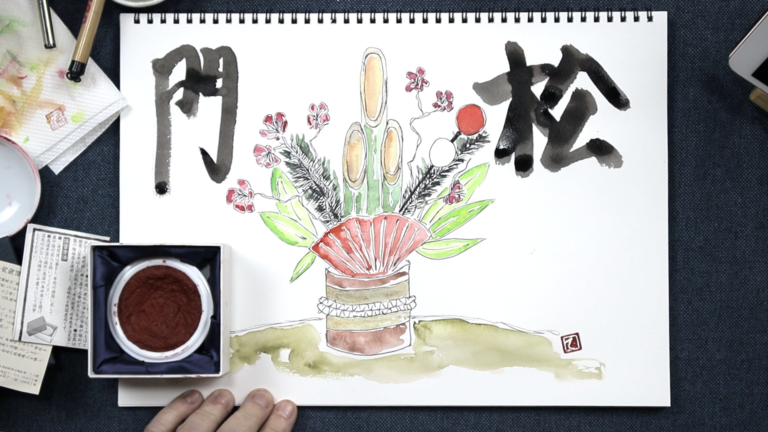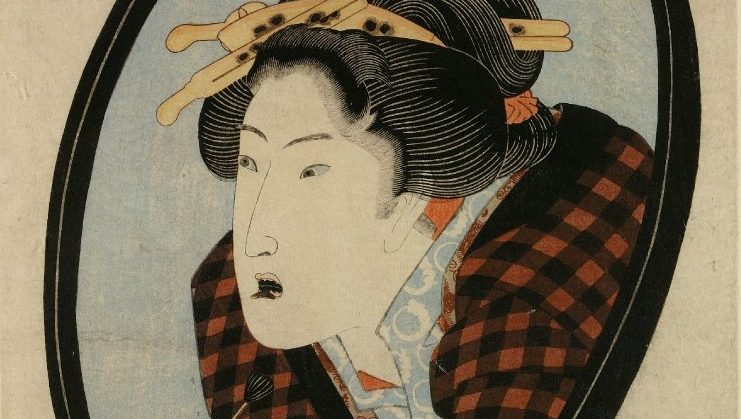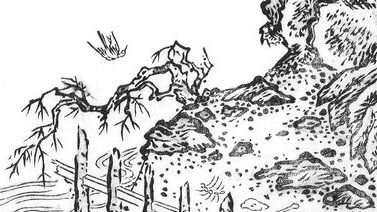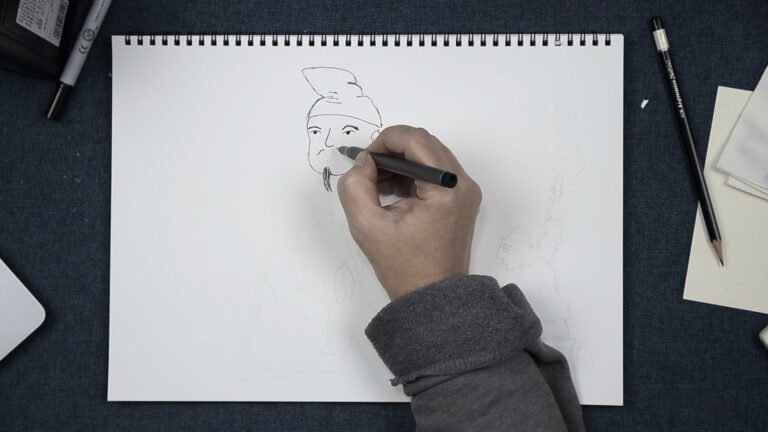Hey hey, this is Thersa Matsuura and you’re listening to Uncanny Japan.
Where did we leave off in last episode Part 1 of Summer Festivals? I think we were finishing up our kakigōri – shaved ice – while watching others mill about in their yukata and jinbei. I think we were about to play some games before the dancing began.
All right. Come let’s go.
Masks
Before we play any games, since it’s dark now let’s visit one yatai (or portable booth) you’ll almost always find at these events. It’s the o-men or mask booth. Easily spottable because the entire back wall and sides are lined with masks. The old fashioned kind, shiny colorful plastic with a string or rubber band to keep them on. Mostly these are for kids.
You’ll find all manner of manga and anime characters – Ultraman, Thomas the Tank Engine, Anpanman, Doroemon, Mickey Mouse, Hello Kitty, and Various Pokemon. But if you’re lucky, you can also find oni, tengu, okame-san (the plump-cheeked lucky lady) and hyottoko (mouth skewed up as if blowing into a fire, lucky guy). You might like the fox half-masks, though. These are made from paper and just covering your nose, eyes and giving you a pair of ears are a little more elegant. There are all sorts of designs, black and gold, red and white, various colors, decorated with flowers and curlicues. Pick one that matches your mood and wear it on the back of your head or pushed up kind of jaunty like above one ear.
Now let’s see what there is to do.
Yo-Yo Tsuri/Fishing for Yo-Yos
When it comes to games at these small festivals there are a couple that you see over and over. There are the not-so-surprising ones, like ring toss, some kind of bowling game, and shateki which is shooting toy guns at objects across the counter and winning prizes.
But there are a couple unique-to-Japan games, too. The first is Yo-Yo Tsuri. Or fishing for yo-yos. We all know what a yo-yo looks like, but Japanese, old-fashioned yo-yos are different. Imagine a small water balloon, different colors, and they’re ringed with brightly colored paint, too. They’re half filled with air so they aren’t too heavy and they have a long rubber band on the end with a loop you can put your finger in, so you can bounce it around if you’d like.
But you don’t just buy one or two, you have to play a clever little game to win them. There is a small blowup swimming pool, filled with water that has dozens of these colorful little water balloons floating there. Their looped rubber bands laying every which way. How you play is you pay a hundred yen or so and are given a several-pronged hook on the end of a long twist of paper. You get three tries to snag one.
So, you hold the end of the paper and try to hook one of the loops and pull the yo-yo out of the pool. If you do, you get to keep it. It doesn’t sound too hard, except the twisted paper which acts as a string invariably gets wet and when it does, it gets weaker and eventually breaks. You have to be careful and try to find easily hookable water yo-yos, without breaking the paper. If you’re good at it, you can get three, if you’re not, the paper disintegrates right away and you get nothing. If you look like you’re going to cry, the person running the game might give you one to be nice. This technique works for several of the games. They don’t want to haul all that back home.
Kingyō Sukui/Goldfish Scooping
The next classic game is kingyō sukui. Or goldfish scooping. It’s believed to have started back in the early 1800s. There are some variants, but let me talk about this one because you need some serious skills to master it. Again, here you’ll have a big container of water on the ground, but instead of yoyos it’s filled with orange and black goldfish, some fancy places actually have demekin, or those bulging-eyed goldfish that are quite exotic and can be incredibly expensive. They were first bred in China in the 1700s and it was thought their eyes looked like dragon’s eyes.
Anyway, how to play. First, you pay your money and are given a bowl and a plastic “poi”. Which is a thin plastic frame. Imagine the shape of a small magnifying glass or a handheld mirror. You’ve got the handle and the round part. Well, with a poi the round part is just the frame and where the glass would go if it were a magnifying glass or a mirror for that matter, there is a circle of washi paper.
Interestingly, there are standardized thicknesses of this paper. If the yatai uses a No. 5 then it’s a little thicker and stronger. A number 7, weak. Some yatai will let you pay a little more for the thicker one. Like the yo-yo game, this paper is going to dissolve if it spends too much time in water. So that’s the trick.
You have to squat down, bowl with water in it, in one hand; poi in the other, and locate the fish you want to keep as a forever pet. The container is a little shallow, so mostly they’re swimming toward the surface. Then in one deft move you have to slide the poi under the fish and into the bowl. It’s going to get wet and the fish is going to flop around a bit, which is going to tear the paper and even dissolve it.
The trick is in the speed and angle, the weight and determination of the fish, I don’t know. I do know there’s something called a kabe-sukui, which is when you scoop up the fish between the poi and the wall of the container. That’s supposed to make it easier. I’ve seen kids get five or more fish with a single poi. Those kids usually have a crowd around them and get cheers. It’s a sight.
As long as the poi is viable you can keep using it. For example, sometimes it tears a little but you can still use it to heft up a fish. I’ve tried and every single time the paper gets wet the fish wriggles and falls through. No fish. No more tries. I may or may not have gone teary eyed and been given a couple fish for my effort.
Once your poi is useless someone will put your fish in a plastic bag and you can take them home. My friend got a pair of goldfish this way and they lived something like twenty years. Huge! Ended up being the size of softballs. For goldfish, they lived very good lives.
Did you know, there’s actually a National Goldfish Scooping Championship held in Nara on the third Sunday in August if you get good. So there’s something to put on your bucket list.
Variations
Another thing about this game is that there are variations of it. You used to be able to scoop little turtles. But nowadays you see colorful super balls a lot, and sometimes small containers of jello or jelly as it’s called here. With those you usually have a small ladle and a jet of water shoots the prizes around a donut-shaped pool, like conveyor belt sushi, so the hard part is being able to catch what you want before it zips by, not a disintegrating piece of paper.
A Couple Snacks
Wew. After all that, maybe you’ve worked up an appetite? There are these treats or old fashioned snacks in Japan called dagashi 駄菓子. They can be sweet or salty, but they are very cheap, very…different than what we’re probably used to. For example, I know you’re not supposed to play with your food but since we’re talking about games here let me tell you about two you can play with and eat when you’re done.
One I’ve probably mentioned before. Neriame – neru means to knead and ame is candy – is a soft rice candy made from glutinous rice starch and sugar. It comes in a host of flavors, strawberry, lemon, cola, cider, melon, etc. You get a big blob of it on the end of a pair of disposable chopsticks and then you walk around with your friends, all of you taking one chopstick in each hand and spinning the sticky blob around and around, smoothing it, adding air to it. The candy becomes shinier and whiter the longer you knead or stretch it and the texture, too, changes. It becomes lighter, chewier, fun! I’ve seen kids walk around all night doing this to see who can get the most kneaded candy. It’s kind of making your own taffy.
So that’s one thing.
But there’s also something called Rakugaki Senbei (落書き煎餅). Senbei you might have heard before are basically rice crackers. But these are very thin, more like wafers. Not much flavor at all. Although they are called takosen, which means octopus cracker, so maybe a little octo flavor? The ones I’ve had don’t taste like anything at all.
But don’t you worry. They WILL taste like something. The rakugaki part of rakugaki senbei can mean graffiti or doodling. So graffiti crackers or doodle wafters. You’re given one. It’s about the size of a saucer. It’s plain, no design. A blank slate, if you will. Then you (or children more likely) are allowed to use brushes dipped into different flavored sugary liquids to draw some picture on the cracker. Flowers, your name, Pikachu.
Oh, but that’s not all. Next you get to hold the thin wafer over bowls filled with colored sugar and use a spoon to dust different parts of your picture. The sugar sticks to the wet areas and makes your own unique pretty design, sugar and octopus flavored treat. Kidding. It doesn’t really taste like octopus. Very instagramable though.Instagramable is Instabae, in Japanese, in case you wanted to know.
Okay, there’s an announcement and someone or someones climb the yagura — remember the tall wooden stage in the middle of the grounds? — and it’s time for the official bon odori dance to start. I actually talked more in detail about bon odori in Episdoe 58. So if you want to hear more details, there’s that. I’ll link in the show notes or you can search for it on the Uncanny Japan website.
I guess the one thing about this that shocked me was that it’s practiced. I don’t know if I just assumed everyone in Japan was born knowing how to bon odori or what. Remember I told you about the kodomo kai – the children’s association – in the last show? Well, one of the benefits to this group is that it’s the place where all the moms and grand-moms teach the different obon dances to the children. Each town or city has a couple different styles they’ll dance over and over. So a month beforehand, you literally gather at night in some parking lot or park, once a week or so, and the music is played on a portable cd or cassette tape player — you might need to google that. They’re still used in my neck of the woods — and everyone does the dances.
Back to the festival: you’re full, you’ve gotten a break from all the summer homework — which is A LOT, by the way — and you’ve been able to hang out with friends. You’ve played some games, you’ve danced some dances, and then the taiko drums stop and — if your neighborhood association has a nice budget — another announcement is made. This time everyone finds some place to sit — it’s preferable to have something to sit on, a small vinyl sheet will do — or you can just stand there and look up. Because next is the fireworks display. You really can’t have a Japanese summer without fireworks. One of the joys of summer in Japan is sitting in your living room, hearing the boom boom and running up stairs to your veranda to see if you can see the fireworks.
Okay, thank you all for listening. Welcome, new patrons, all my love and gratitude to ALL my patrons. Last week’s Sunday Night Blog was a gingery-lime inari sushi recipe, by the way. That felt very summery.
I will talk to you all again in two weeks, Bye bye.







Hi! Thank you so much for the Uncanny Japan podcast! Unfortunately, despite many trips to my wife’s home town in Ibaraki-Ken, I’ve never experienced an encounter with either Yokai or Obake. Maybe one day… I’m not sure why I didn’t find your podcast before 2023, but I am very happy that I did! I very much enjoy listening to your stories!
Gene! I’m just seeing your comment now. So sorry I missed the notification. My sound dude, Richard, is from up there. I wonder if he’s ever seen one. Keep looking! They’re out there, sneaky little buggers. Thank you so much for listening ヾ(@⌒ー⌒@)ノ